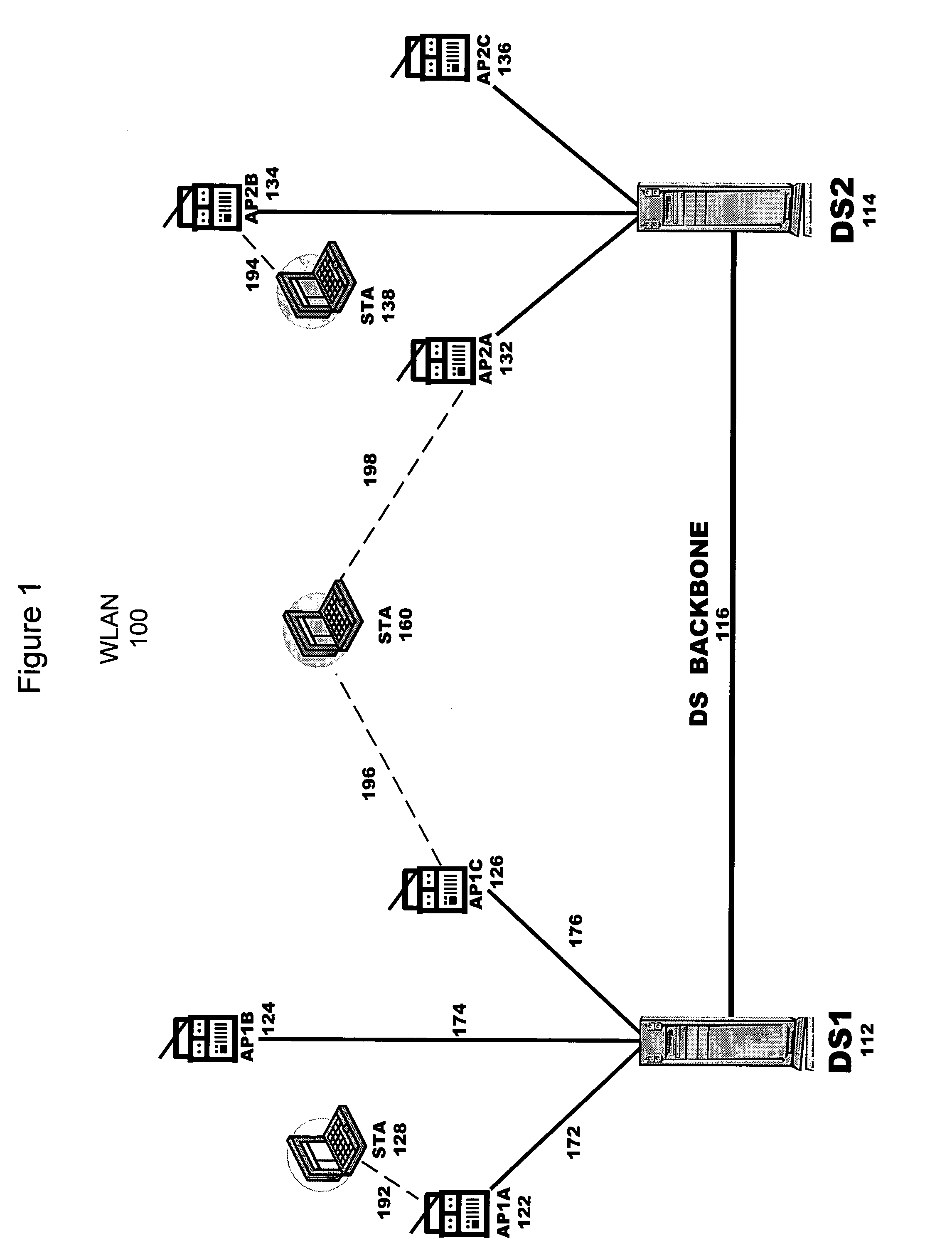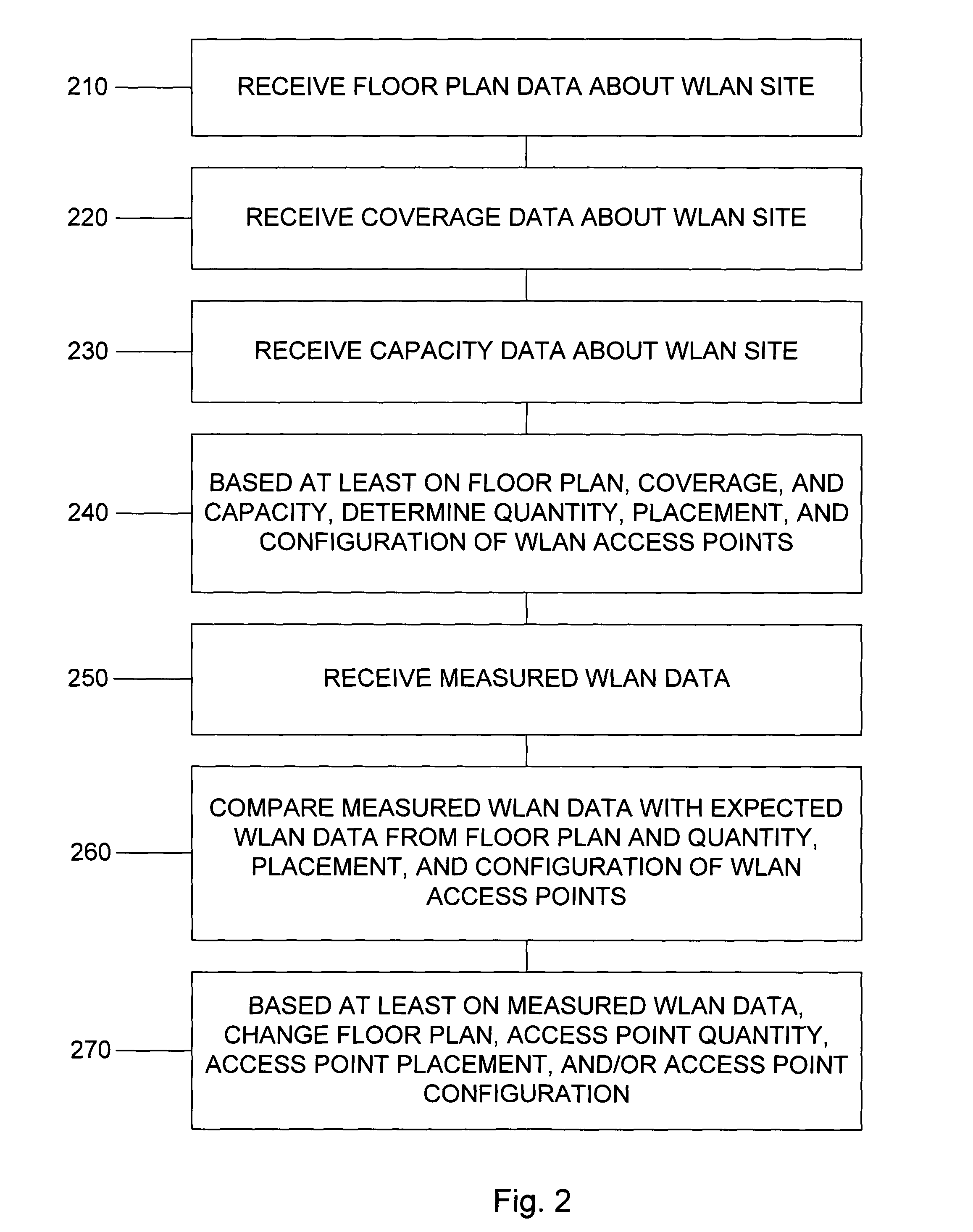Wireless LAN management
a technology of lan management and wireless lan, applied in the field of wireless lan management, can solve the problems of insufficient central record of access point configuration, easy overflow of capacity demands, and manual site survey requiring an expensive and time-consuming evaluation of wlan site,
- Summary
- Abstract
- Description
- Claims
- Application Information
AI Technical Summary
Problems solved by technology
Method used
Image
Examples
Embodiment Construction
[0010] The manual site survey can be replaced with WLAN simulation that considers floor plans and capacity. Various physical factors are considered in the WLAN simulation, such as: architectural factors (e.g., building size, building topology, obstacles, and office sizes), attenuation factors for different objects (e.g., walls, windows, cubicles, doors, elevators, other fixed objects) and / or types of material (e.g., free space, metal, concrete, plaster, cloth partition), and interference sources (e.g., microwave ovens, cordless phones, Bluetooth devices). Other coverage factors include transmitter power, receiver sensitivity at the target communications rate, and target operational link margin.
[0011] The WLAN simulation accounts for WLAN bandwidth capacity shared by all users, and not just coverage. Because air is a shared medium and not a switched medium, focusing exclusively on coverage can yield nonideal results, such as for anything but the simplest deployments such as a single...
PUM
 Login to View More
Login to View More Abstract
Description
Claims
Application Information
 Login to View More
Login to View More - R&D
- Intellectual Property
- Life Sciences
- Materials
- Tech Scout
- Unparalleled Data Quality
- Higher Quality Content
- 60% Fewer Hallucinations
Browse by: Latest US Patents, China's latest patents, Technical Efficacy Thesaurus, Application Domain, Technology Topic, Popular Technical Reports.
© 2025 PatSnap. All rights reserved.Legal|Privacy policy|Modern Slavery Act Transparency Statement|Sitemap|About US| Contact US: help@patsnap.com



